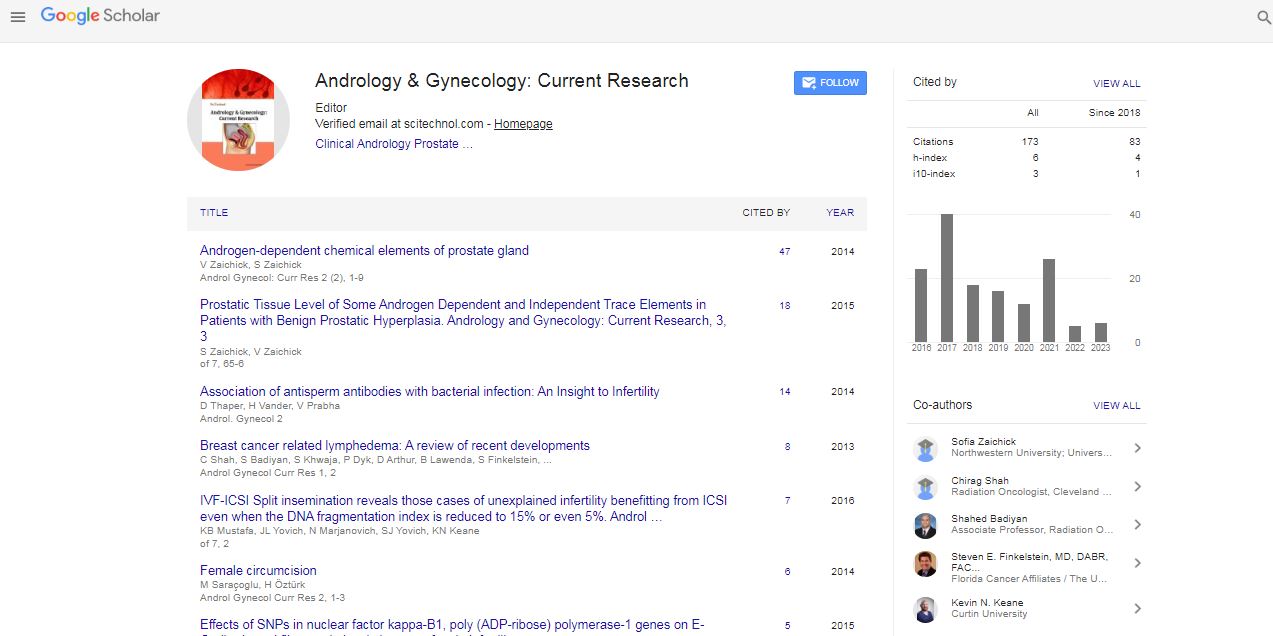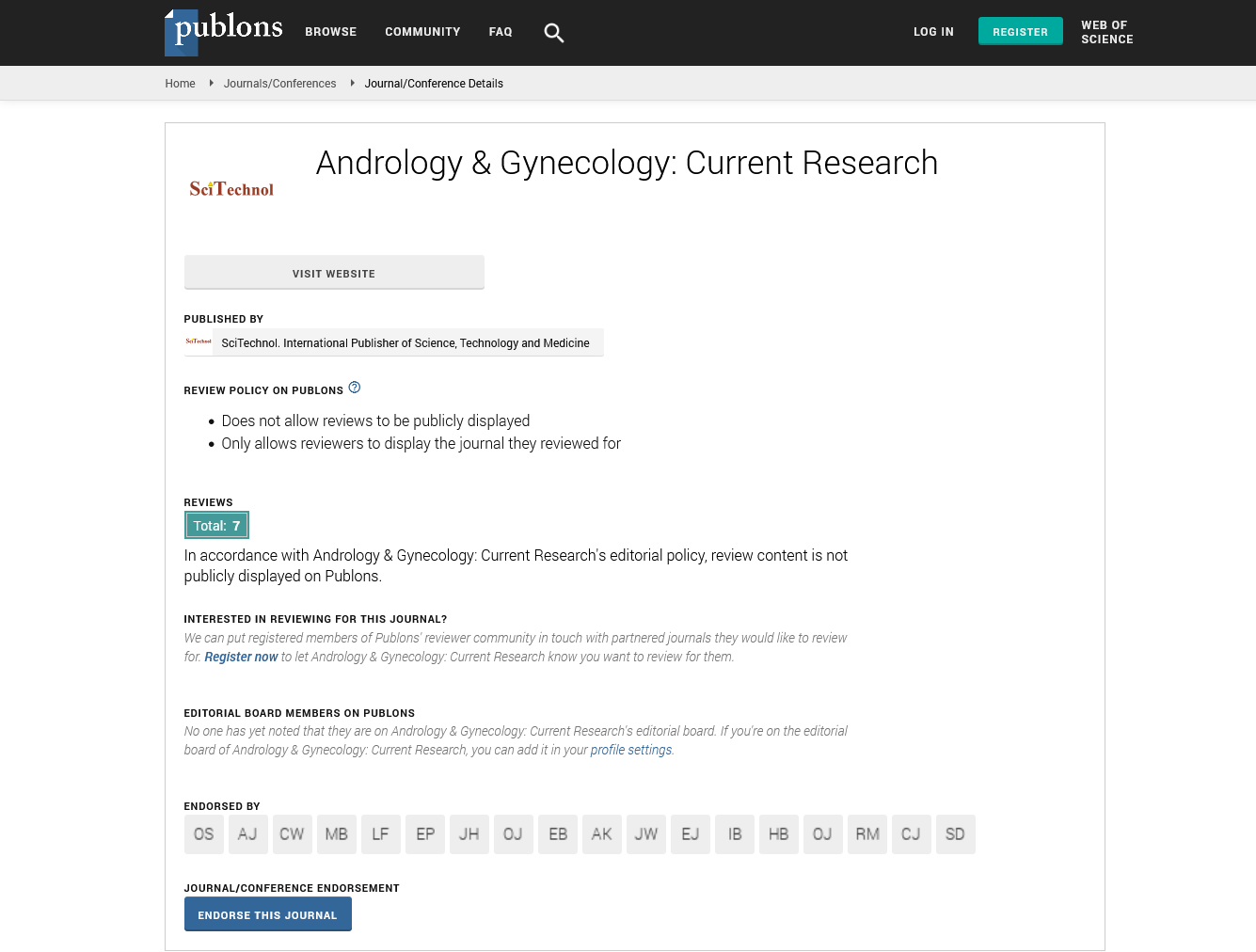Research Article, Androl Gynecol Curr Res Vol: 6 Issue: 1
Current Challenges in the Diagnosis of Deep Infiltrating Endometriosis
Steven R. Lindheim1*, Tanya Glenn1,3, Pascal Gagneux2, Rose A. Maxwell1, Yaklic JL1, Austin D. Findley1,3and Bala Bhagavath4
1Wright State University, Boonshoft School of Medicine, Department of Obstetrics and Gynecology, Ohio, USA
2Department of Cellular and Molecular Medicine, University of California San Diego, USA
3Wright-Patterson Medical Center, Department of Obstetrics and Gynecology, Wright-Patterson Air Force Base, Ohio, USA
4University of Rochester Medical Center, Division of Reproductive Endocrine Infertility, Department of Obstetrics and Gynecology, School of Medicine and Dentistry, New York, USA
*Corresponding Author : Steven R. Lindheim
Department of Obstetrics and Gynecology, Wright State University, Ohio, United States of America
Tel: 858-740-1083
Fax: 937-222-7255
E-mail: steven.lindheim@wright.edu
Received: February 28, 2018 Accepted: March 15, 2018 Published: March 20, 2018
Citation: Lindheim SR, Glenn T, Gagneux P, Maxwell RA, YaklicJL, et al. (2018) Current Challenges in the Diagnosis of Deep Infiltrating Endometriosis. Androl Gynecol: Curr Res 6:1. doi: 10.4172/2327-4360.1000162
Abstract
Deep infiltrating endometriosis (DIE) is a debilitating subset of endometriosis with an ill-defined set of symptoms and lacks specific diagnostic criteria to identify, leading to significant delays in treatment. Endometriosis itself is associated with chronic pain and infertility, leading to significant healthcare costs. A literature has shown that DIE is a non-progressive and curable disease. Currently, diagnosis is based purely on surgical diagnosis, which carriers a higher rate of morbidity, and fear of surgery or reluctance on behalf of provider, may delay diagnosis and thus treatment. Multiple attempts have been made to create an appropriate classification system mainly based on symptoms or imaging, however no one scheme has been successful to appropriately identify DIE. Research has now been geared towards the use of biomarkers, including blood, urine, peritoneal/follicular fluid, or endometrial tissue, to construct a diagnostic tool for DIE. This has the potential to create a less invasive mechanism for earlier identification and treatment of this curable disease.
 Spanish
Spanish  Chinese
Chinese  Russian
Russian  German
German  French
French  Japanese
Japanese  Portuguese
Portuguese  Hindi
Hindi 


